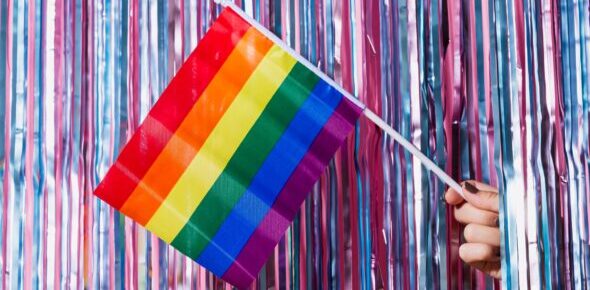
Pride month is an opportunity for celebration. Through celebration, we honor the LGBTQ+ leaders and activists who came before us and thank them for their efforts toward liberation.
We often hear about Pride’s origins at the Stonewall riots, a radical protest against police harassment led by transgender leaders of color including Marsha P. Johnson and Sylvia Rivera. Patrons of Stonewall responded to an unjust police raid on a gay bar on June 27, 1969 and sparked a fight towards collective liberation—and the beginning of Pride as we know it today.
While the Stonewall riots are among the most well-known acts of queer resistance, it’s important to honor people, events and organizations throughout LGBTQ+ history that don’t get the same attention.
1. Harlem Drag Balls
Long before shows like Legendary and Pose highlighted ballroom culture, Harlem saw an underground ballroom scene like no other. Dating all the way back to the late 1800s, Black fraternal organizations hosted Harlem’s Drag Balls as masquerade ball fundraisers. Originally hosted by heterosexual men, the drag balls presented an opportunity for men exploring their sexuality to appear in drag publicly and legally. During the Harlem Renaissance, the drag balls became more closely associated with the gay community. Ballroom continues today! Houses provide a sense of community for members, and the talent displayed at the balls is constantly evolving.
2. Cooper Do-nuts Riot
In 1959, a full 10 years before the Stonewall Riots, gay and trans patrons of the Cooper Do-nuts café in Los Angeles rioted in response to police harassment. Since Cooper Do-nuts was a welcoming space for queer and trans patrons, police often targeted the space. At the time, it was illegal to dress as a gender different than the gender on your legal ID. After many instances of being harassed and criminalized by the police, the patrons of Cooper Do-nuts had enough. This riot is viewed by some historians as the first LGBTQ+ uprising in the United States.
3. Vanguard
Vanguard was a gay liberation youth organization in San Francisco from 1965 to 1967. Many claim that Vanguard’s political organizing was born out of the Compton’s Cafeteria riot. Despite its short lifetime, the group had a significant impact fighting businesses that refused to serve LGBTQ+ youth. When not organizing, the group held dinners and holidays with their chosen family members, and built a powerful sense of community.
4. Compton’s Cafeteria Riot
Compton’s Cafeteria in San Francisco was a popular hangout for transgender women, but cafeteria staff routinely called the police on the women, claiming they were loitering. Police responded with almost constant, violent harassment. In 1966, transgender women responded by fighting back and sparked a riot that lasted several days. Compton’s is now known as one of the first known acts of resistance by queer people to police brutality. In the following years, support networks for transgender health services grew substantially.
5. STAR House
Founded in 1970 by previously mentioned leaders Marsha P. Johnson and Sylvia Rivera, Street Transvestite Action Revolutionaries (STAR) was a trans, street-based organizing collective. It provided housing and other resources to homeless LGBTQ+ youth (predominantly trans and gender non-conforming teens of color). Being unhoused themselves, Johnson and Rivera understood the barriers that young LGBTQ+ individuals, sex workers, and people of color in NYC faced.
6. Combahee River Collective
Combahee River Collective was a Black feminist lesbian association in Boston from 1974-1980. They are best known for their Combahee River Collective Statement, in which they address the failings of white feminism and the civil rights movement and explain how their intersecting identities leave them without a place in both communities. This statement contributed significantly to the development of the concept of intersectionality.
Of course, this list is far from exhaustive and only focuses on the United States. Queer acts of resistance, revolution and resilience are performed every day. In fact, just existing as your authentic self can be a radical act. When we center the stories and experiences of BIPOC trans and gender non-conforming youth throughout history, we make space for liberation today.
About Us
Mount Sinai Adolescent Health Center’s Project IMPACT (Improving Access to Care and Treatment) provides comprehensive, integrated care to HIV-positive and HIV-negative, high-risk young people in the NYC area.
Madelynn Bovasso (she/her) is the program associate for Project IMPACT. Her responsibilities range from community outreach, patient recruitment, PrEP health education and clinical data management. She recently graduated from American University in Washington, DC and is a full-spectrum doula. In her spare time, she enjoys volunteering with the Carolina Abortion Fund, vegetarian cooking and reading all about sexual health.
Chelsea Mullen, LMSW (she/her) is a social worker on the Project IMPACT team. She entered the mental health field in 2008 when she started providing crisis support to sexual assault survivors. Her work centers the dignity, wisdom, and creativity of queer and trans people, people living with HIV, and survivors of violence and trauma. Her therapeutic practice is guided by black and queer feminists who are offering paths to collective liberation, and she offers her eternal gratitude and support to the queer ancestors, survivors, and current activists who have been rebelling against racist, ableist, homophobic, and transphobic systems.
The Mount Sinai Adolescent Health Center is located in New York City. It provides comprehensive, confidential, judgment free health care at no charge to over 12,000 young people every year. This column is not intended to provide medical advice, professional diagnosis, opinion, treatment or services to you or to any other individual, only general information for education purposes only.


